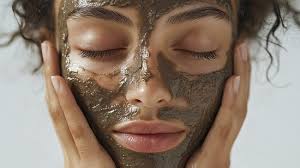Get Your AI Analysis
Personalized skincare insights
Discover your perfect skincare routine with our AI-powered analysis. Get personalized recommendations for glowing, healthy skin.
Start AnalysisFollow Us
Stay updated with the latest skincare tips, trends, and expert advice.
Sustainable Ingredients Combating Dryness in 2025
As a seasoned skincare professional with over a decade of hands-on experience in the ever-evolving beauty landscape, I’ve witnessed countless shifts and innovations. Yet, none have been as profound or as urgent as the current paradigm shift towards sustainability. We’re standing on the precipice of 2025, and the conversation isn’t just about efficacious ingredients anymore; it’s about ingredients that are kind to our skin and our planet. For those of us battling chronic dryness, this convergence of high-performance science and environmental consciousness is nothing short of revolutionary.
Dry skin isn't merely a cosmetic concern; it's a compromised skin barrier, a gateway for irritants, and a source of discomfort for millions globally. Historically, our go-to ingredients for hydration have sometimes come with a hidden environmental cost. But the future is brighter, more sustainable, and incredibly effective. In this comprehensive guide, we'll delve into the eco-friendly, cutting-edge ingredients set to dominate the dry skin care market in 2025 – from ingenious upcycled botanicals to potent biofermented actives and transformative waterless formulations. Get ready to discover how leading brands are pioneering this movement, offering superior hydration without compromising our planet.
The Paradigm Shift: Sustainability Meets Efficacy
The beauty industry is undergoing a profound transformation. Consumers, now more informed than ever, are demanding transparency, ethical sourcing, and demonstrable environmental responsibility from their skincare brands. A recent report by Statista projects the global sustainable beauty market to reach $48.3 billion by 2025, a clear indicator that eco-consciousness is no longer a niche, but a mainstream expectation. This isn't just about 'clean beauty'; it's about responsible beauty at every stage, from cultivation and extraction to formulation and packaging.
For dry skin, this shift is particularly impactful. Dryness often stems from a compromised skin barrier, necessitating ingredients that not only add moisture but also strengthen the skin's natural defenses. The challenge has been to find ingredients that deliver this intense nourishment while adhering to strict sustainable practices. Thankfully, advancements in green chemistry and biotechnology are making this possible, opening up a world of potent, planet-friendly solutions.

Understanding Dry Skin and the Barrier
Before we dive into the solutions, let's briefly revisit the core issue. Dry skin, or xerosis, is characterized by a lack of moisture in the stratum corneum, the outermost layer of the epidermis. This often goes hand-in-hand with a damaged skin barrier, which is like the skin's protective shield. When this barrier is impaired, essential lipids like ceramides and fatty acids are depleted, leading to increased transepidermal water loss (TEWL) and making the skin vulnerable to environmental aggressors, irritation, and inflammation. Effective dry skin care must, therefore, focus on both hydrating and repairing the skin barrier.
Sustainable Hydration Innovations for 2025
Upcycled Botanicals: The Future of Resourcefulness
Imagine harnessing the power of nature's discards to transform your dry skin. That’s the magic of upcycled botanicals. This innovative approach involves extracting valuable active compounds from materials that would otherwise be considered waste by-products of other industries – think fruit pomace from juice production, coffee grounds from cafes, or seed oils from food processing. Instead of ending up in landfills, these materials are given a second life, rich in antioxidants, vitamins, and hydrating elements.
For dry skin, upcycled ingredients offer incredible benefits. For instance, upcycled coffee seed oil, derived from coffee grounds, is rich in linoleic acid and polyphenols, known for their moisturizing and antioxidant properties. Similarly, upcycled fruit extracts (like mango, pomegranate, or cranberry seeds) are potent sources of omega fatty acids and vitamins, helping to replenish the skin’s lipid barrier and reduce TEWL. This not only minimizes waste but also reduces the demand for virgin resources, making it a win-win for both your skin and the planet.
Product Recommendation: Brands like Biossance are pioneers in sustainable sourcing, often utilizing upcycled components. Look for their Squalane + Omega Repair Cream, which integrates sustainable plant-derived squalane and often employs other conscientiously sourced ingredients that align with the upcycled philosophy, promoting robust barrier function and intense hydration.
Biofermented Actives: Potency Meets Purity
Fermentation isn't just for food and drinks; it's a game-changer in skincare. Biofermented actives are created by cultivating microorganisms (like yeast or bacteria) to break down raw ingredients, transforming them into more potent, bioavailable, and sometimes entirely new compounds. This process not only enhances the efficacy of ingredients but also often reduces their environmental footprint, requiring less energy and fewer harsh chemicals than traditional extraction methods.
For dry skin, biofermented ingredients are particularly beneficial due to their enhanced ability to penetrate the skin and deliver targeted benefits. Fermented hyaluronic acid, for example, often boasts smaller molecular sizes, allowing for deeper hydration. Similarly, fermented ceramides are showing immense promise in effectively replenishing the skin’s natural lipid barrier. The fermentation process can also generate a host of beneficial postbiotics, which support a healthy skin microbiome – crucial for a resilient barrier.
"Biofermentation allows us to magnify the potency of natural ingredients while minimizing environmental impact. For dry skin, this means we can achieve superior hydration and barrier repair with ingredients that are not only effective but also incredibly pure and sustainable." - Dr. Anya Sharma, Cosmetic Dermatologist.
Product Recommendation: Many Korean skincare brands excel in fermentation technology. Products like SK-II's Facial Treatment Essence, famed for its Pitera (a fermented yeast extract), is a prime example. While not solely for dryness, it significantly improves skin barrier function and hydration. More specifically, look for products incorporating fermented oats or rice, known for their soothing and moisturizing properties, often found in brands like Youth To The People.
Waterless Formulations: A Desert Oasis for Your Skin and Planet
Water is often the primary ingredient in conventional skincare, sometimes making up 70-90% of a formula. While essential for life, the extensive use of purified water in products comes with a significant environmental cost in terms of processing, transportation, and waste. Waterless formulations are a growing trend that addresses this by either removing water entirely or replacing it with potent botanical extracts, oils, or powders.
The benefits are manifold: increased potency (you’re getting a higher concentration of active ingredients), reduced need for preservatives (microbes thrive in water), and a lower carbon footprint (lighter products mean less energy for shipping). For dry skin, this translates to incredibly concentrated balms, solid serums, and oil-based treatments that deliver intense, long-lasting hydration and barrier repair. A 2023 industry survey revealed that 40% of consumers are actively seeking water-saving beauty products, indicating a strong market shift towards this sustainable innovation.
Product Recommendation: Brands like Ethique specialize in solid, waterless bars, offering concentrated cleansers, moisturizers, and serums that are incredibly effective for dry skin and have zero plastic waste. Also, look for concentrated facial oils from brands like Herbivore Botanicals, which often feature potent botanical extracts in a water-free base.
Next-Gen Plant-Based Ceramides & Squalane
Ceramides are the unsung heroes of the skin barrier, making up about 50% of its lipid composition. Traditionally, some ceramides were animal-derived or synthetically produced with less eco-friendly methods. Now, we’re seeing a surge in plant-based ceramides derived from sources like rice bran, wheat germ, or konjac, which are structurally similar to skin's natural ceramides and highly effective in restoring barrier function. These bio-mimetic alternatives offer sustainable sourcing with superior efficacy.
Similarly, squalane – a fantastic emollient – has moved from being primarily shark-derived (squalene) to sustainably sourced plant-based squalane, typically from olives, sugarcane, or amaranth. This evolution is a testament to the industry's commitment to ethical and effective solutions. Sugarcane-derived squalane, in particular, is lauded for its ultra-light texture, non-comedogenic nature, and exceptional ability to mimic skin’s natural oils, making it ideal for even sensitive, dry skin.
Prebiotics & Postbiotics for Barrier Health
A healthy skin microbiome is intrinsically linked to a healthy skin barrier. Prebiotics (food for beneficial skin bacteria) and postbiotics (beneficial compounds produced by bacteria) are gaining traction in sustainable formulations. Ingredients like oat extracts, inulin, and fermented lysates nurture the skin's natural ecosystem, improving resilience and reducing inflammation often associated with dry skin. This holistic approach supports the skin's self-repair mechanisms from within.
"The future of dry skin treatment isn't just about adding moisture; it's about fostering a resilient, balanced skin ecosystem. Pre- and postbiotics are crucial in this, promoting a healthier barrier that can better retain moisture and defend against environmental stressors, all through sustainable, bio-engineered pathways." - Dr. Emily Carter, Dermatological Researcher.

Brands Leading the Charge
Several brands are not just talking about sustainability; they're embedding it into their DNA, offering impactful solutions for dry skin:
REN Clean Skincare: Renowned for their 'Zero Waste' philosophy, they focus on recyclable packaging and ethically sourced ingredients, offering moisturizers rich in sustainably derived plant oils.
Tatcha: While luxurious, Tatcha employs traditional Japanese ingredients like Uji green tea, Akita rice, and Okinawa red algae, sourced and processed with deep respect for nature and community, ideal for nourishing dry skin.
FARMACY: Their commitment to 'farm-to-face' includes sustainable farming practices, using Echinacea GreenEnvy™ and sustainably sourced honey for their hydrating and soothing formulations.
Building Your Sustainable Dry Skin Routine for 2025
Embracing a sustainable routine for dry skin doesn't have to be overwhelming. Here’s a simple, actionable guide:
Cleanse Gently: Opt for waterless cleansers (balms or oils) or low-lather creamy cleansers with upcycled botanical extracts. Brands like Youth to the People's Superberry Dream Cleansing Balm are excellent.
Layer Biofermented Serums: After cleansing, apply a serum rich in biofermented hyaluronic acid or ceramides to boost hydration and barrier repair. Glow Recipe's Plum Plump Hyaluronic Serum (with fermented plum) is a great choice.
Deep Hydration with Plant-Based Ceramides/Squalane: Follow with a moisturizer or facial oil featuring sustainable squalane or plant-based ceramides. Biossance Squalane + Omega Repair Cream is a standout.
Protect with Mineral Sunscreen: Finish with a reef-safe, mineral-based sunscreen. Many brands are now offering sustainable packaging for these essentials.
Consider Waterless Masks: Incorporate concentrated solid or powder masks once or twice a week for an extra boost of nourishment.
Remember, consistency is key. Integrating even a few sustainable swaps can make a significant difference to your skin and the environment.

